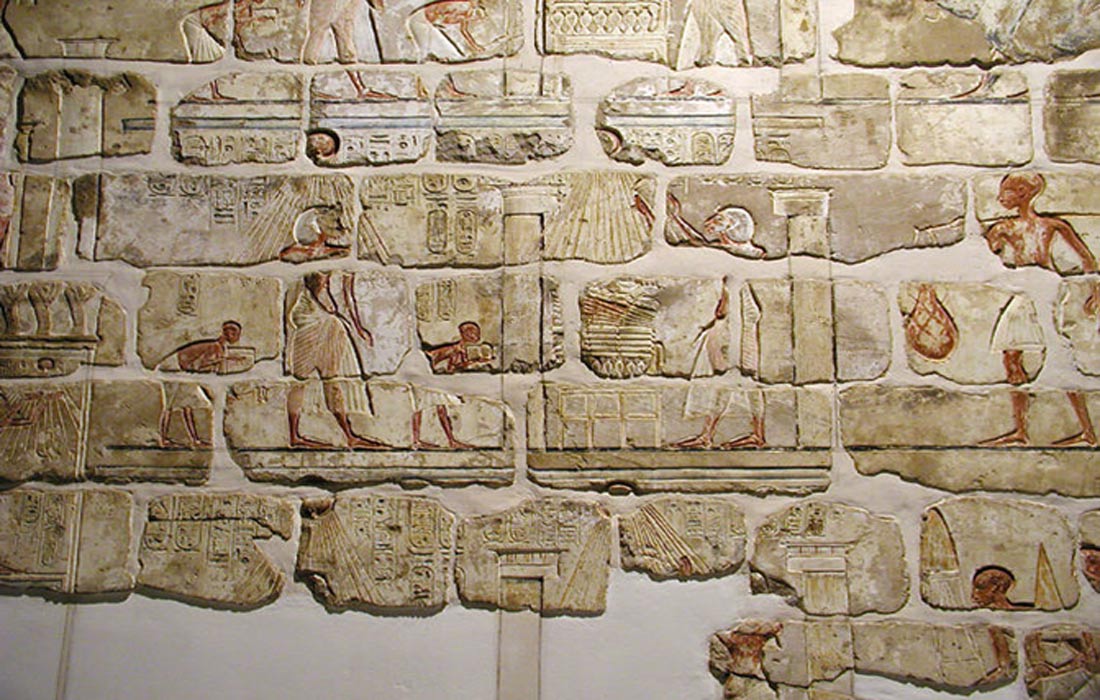
Discovery of the Talatat: Akhenaten’s Preserved Stone Diaries
The illustrious Eighteenth Dynasty burst onto the vibrant stage of ancient Egyptian history with great import, for it emerged following the expulsion of the reviled Hyksos (Second Intermediate Period). Successive pharaohs left no stone unturned to celebrate that unique victory which had enabled them to break the shackles of foreign domination and lay the foundations for the New Kingdom (circa 1550 BC). The state god Amun (the Hidden One) was heralded for granting Egypt success in its arduous mission.
By the time Pharaoh Amenhotep III (also known as The Magnificent) “joined the gods” in Regnal Year 38, Egypt was at the zenith of her imperial splendor. Internal administration was sound, the wealth of the world poured into the coffers, and international relations flourished. The country was now an empire of opulence.
The death of Amenhotep III at the height of this Golden Age brought his second son Amenhotep IV (r. 1353-1336 BCE) to the throne of Egypt. His ascent to high office was courtesy a stroke of sheer luck – the premature demise of his elder brother and heir apparent, crown prince Thutmose. Some Egyptologists, such as Dr. Nicholas Reeves, suggest a brief co-regency between Amenhotep IV and his illustrious father. Nevertheless, for a time the transition of power seemed to have gone off smoothly and all seemed well with the new disposition.
The gods were accorded their rightful place, and Ma’at, or cosmic order that affects human life, preserved as it had been from time immemorial. But discontent brewed just below the idyllic surface.
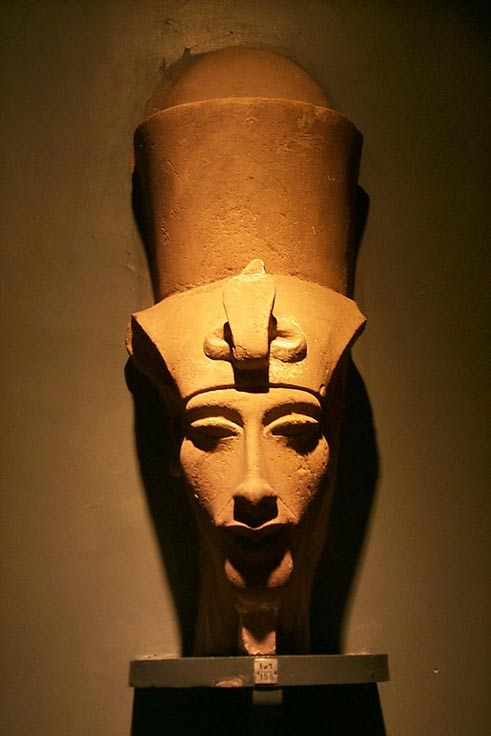
A Bust of Amenhotep IV/Akhenaten in the Luxor Museum, Egypt. (CC BY 2.0)
During his reign as sole pharaoh, Amenhotep IV, ably assisted by Nefertiti, the fabled beauty and Great Royal Wife, embarked on a daring enterprise that condemned the pantheon of gods to virtual obscurity, while promoting a single deity, the Aten. These cataclysmic changes that were launched in the imperial capital Thebes and later nurtured in the new city Akhetaten (‘Horizon of the Aten’, modern Tell el-Amarna in Middle Egypt) resulted in disastrous consequences that pushed religion and statecraft in Egypt to the very edge. Nothing like it had ever been witnessed before, and it left the entire nation pulverized.
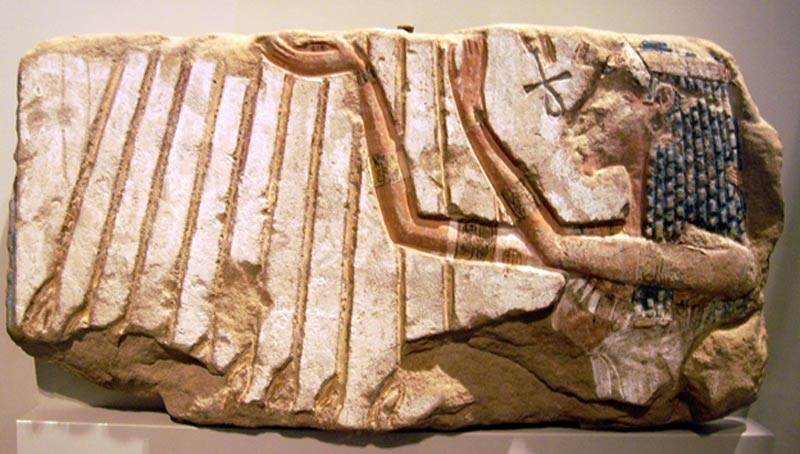
Relief of Nefertiti adoring Aten - Ägyptisches Museum Berlin. (CC BY-SA 3.0)
In a single stroke Amenhotep IV had overturned centuries of beliefs. The massive changes that were introduced in religion, art, literature, philosophy, and even the very way of life in that epoch sent shockwaves that reverberated for generations thereafter.
It is for these reasons that historians have labelled Amenhotep IV variously―while some hail him as the first individual or monotheist; the grotesque pharaoh is no more than a miserable heretic or anomaly to others.
But well before assuming the throne and unleashing his iconoclastic beliefs on the unwary populace, one of our first glimpses of Amenhotep IV is in a traditional, stylized depiction on the blocks from Pylon X in the sprawling temple of Amun-Ra at Karnak, near the modern city of Luxor.
In fact, by studying the wall carvings in this great temple we can probably pinpoint the exact time when Amenhotep IV decided to usher in sweeping changes; for there exists a 40-foot-high (12-meter-high) relief of the pharaoh depicted in a traditional "smiting scene" that was commissioned immediately after he came to power. The fact that it is unfinished could well mark the dramatic, watershed moment.
The First Aten
Amenhotep IV did not devise Atenism per se – the deity was already known at the time of the Pyramid Texts. So, it was not a flash-in-the pan conversion moment nor the act of a dreamer; but the last pitch in a cumulative effort to promote the Heliopolitan sun cult as a bulwark against the growing influence of the Amun priesthood. At the start of the New Kingdom, Ahmose I, its founder, is praised on a stela as the "Aten when he shines".
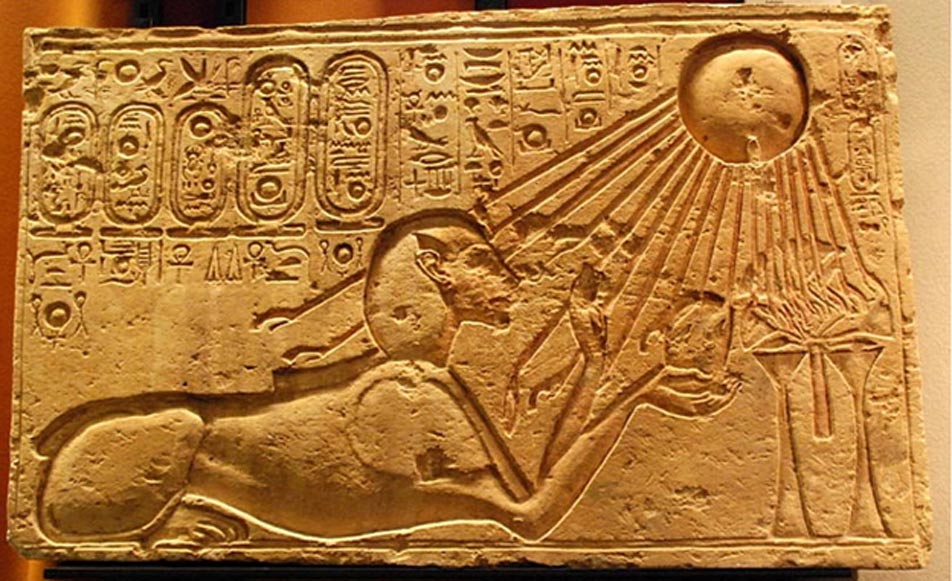
This stone block portrays Akhenaten as a sphinx, adoring Aten. It was originally found in the city of Amarna/Akhetaten. (CC BY 2.0)
Still later, the deity gained prominence when Amenhotep III came to the throne and equated himself not just with Amun, but also claimed that he was the incarnation of Ra. He envisioned that the gigantic 65-foot-high (20-meter-high) quartzite statues of himself (the renowned Colossi of Memnon) in his funerary temple should “gleam into people’s eyes like the rising Aten”.
Unlike the legion of Egyptian gods and goddesses, the Aten was not depicted in anthropomorphic form, but was instead represented as a radiant solar disc with a uraeus and rays emanating from it, ending in hands, either left open or holding ankh symbols. The Aten was considered both masculine and feminine simultaneously; and more importantly, the Creator of all things.
Amenhotep IV declared that the Aten was not merely the supreme god, but the only god; and that he was the sole intermediary between the Aten and humankind. So, while the pharaoh and his queen worshipped the Aten, their subjects worshipped them. This abstract god must have traumatized the ordinary Egyptians, especially because it meant that the multitudinous deities who played a role in ensuring their safe passage into the afterlife were obliterated.
Trouble in the Temple
Early on, the extravagant Aten-centric building projects of the new pharaoh were funded by the Amun temples, forcibly, in all likelihood. His proscription of the hoary Egyptian pantheon, particularly the chief god Amun, irked the powerful priesthood no end, and doubtless, matters came to a boiling point by Year Five―just when Amenhotep IV left for good to settle in Akhetaten. In his decree on the Boundary stelae at Amarna, Akhenaten lamented that matters had gotten out of hand; and that it was far worse than in the time of his predecessors. But he stopped short of describing what “it” was.
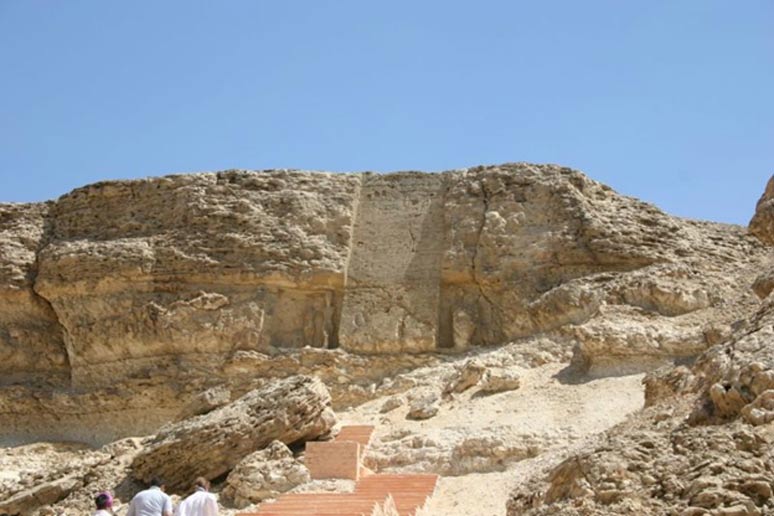
The Boundary Stelae of Akhenaten has been cut into the living rock at Amarna (Public Domain)
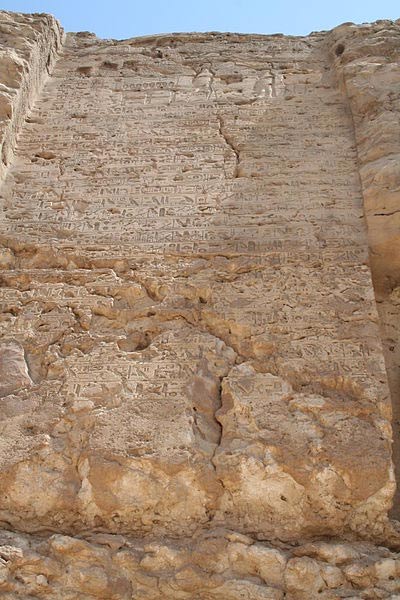
Detail, Boundary stela U in Tell el-Amarna (CC BY-SA 3.0)
Moving the capital elsewhere was a shrewd move born out of political expediency, as much as it was to avoid possible coups and conspiracies. But there must have been an attempt, at least early in Akhenaten’s rule, to achieve an accommodation between the old and the new. During the first five years of his reign, the pharaoh who was in an apparent hurry to introduce the Aten, decorated the southern entrance to the precincts of the temple of Amun-Ra with scenes of himself worshipping Ra-Harakhti the falcon headed aspect of the sun.
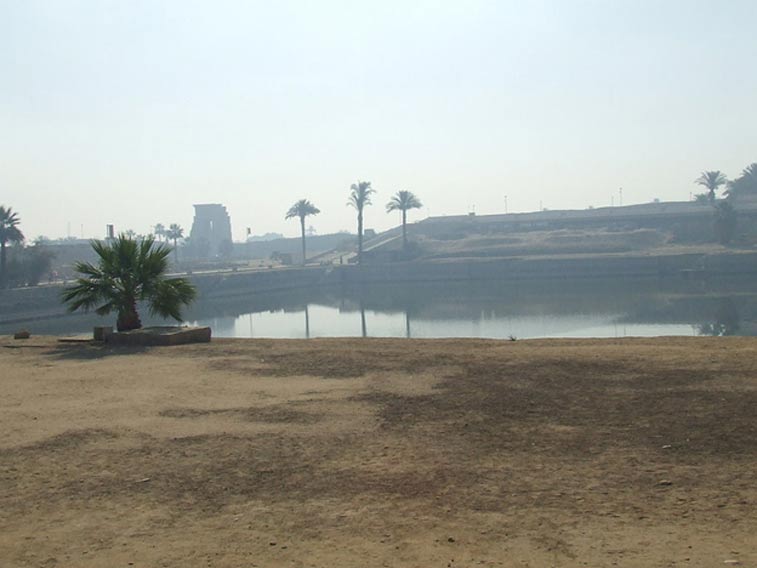
The Sacred Lake of Precinct of Amun-Ra. (CC BY-SA 3.0)
From an examination of the reliefs dating from that period in Karnak, Egyptologists discovered the remnants of four distinct structures. Constructed outside the boundaries of the Precinct of Amun-Ra, the main temple in the complex was named the Gm–p3–itn (Gem-pa-Aten / "The Sun Disc is Found in the Estate of the God Aten") and its remains measuring 426 feet by 708 feet (130 meters by 216 meters) were discovered in-situ. Its longer axis ran east-west, with its south side aligned with the central east-west axis of the Amun temple.
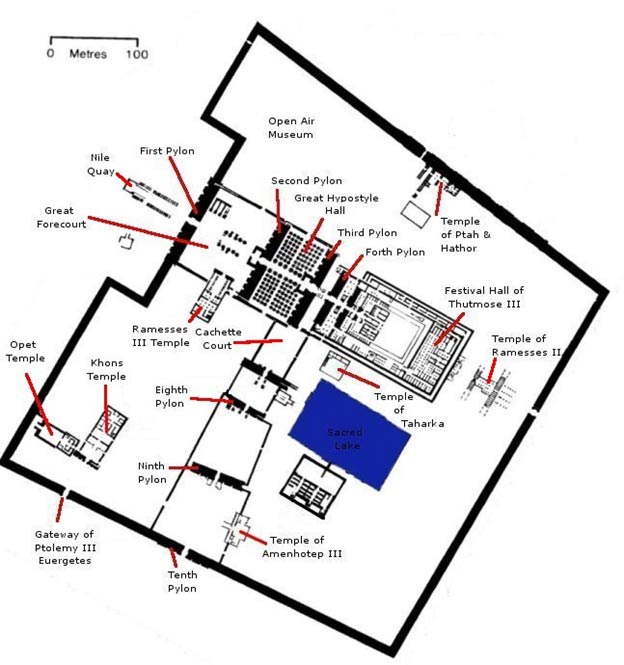
Map of the Amun-Ra Temple (Public Domain)
The Gem-pa-Aten was fronted by an open court with a colonnade of square sandstone pillars some 23 feet high (seven meters high), against which rested alternating colossal statues of Amenhotep IV and Nefertiti. This enormous structure was surrounded by an outer wall of mudbrick laid in undulating courses and, at a distance of 16.4 feet (five meters), an inner stone wall 6.5 feet (two meters) thick constructed of painted/carved limestone.
The other structures were named Hwt–bnbn (Hwt benben / "The Mansion of the Benben stone"), Rwd–mnw–n–itn–r–nḥḥ (Rud-menu / "Sturdy are the Monuments of the Sun Disc Forever"), and Tni–mnw–n–itn–r–nḥḥ (Teni–menu / "Exalted are the Monuments of the Sun Disc Forever"). More importantly, the pharaoh followed up these building projects with an official change of nomen from Amenhotep (Amun is Satisfied), to Akhenaten (Effective for Aten).
Donald B. Redford, director of the ‘Akhenaten Temple Project’ (Pennsylvania State University) says that judging by its artistic style and composition the Gem-pa-Aten seems to have been the earliest building; while the final construction, the Hwt-Bnbn depicts Nefertiti sans Akhenaten, in the role of priest, often facing her own image across the offering table.
Architecture of an Empire
But how did such massive temples arise in so little time? How was the construction of a huge city like Akhetaten achieved so quickly? The answer can be found in the building material Akhenaten’s architects used. For centuries, the grand Egyptian monuments were mostly built out of very large blocks of limestone or sandstone. In order to expedite their work, the pharaoh’s builders devised an ingenious plan; they used a smaller size of masonry block measuring 52x26x22 centimeters (approx. 20x10x8.5 inches) which one worker could carry with ease. These blocks were mostly richly painted and/or carved with scenes from everyday life: the pharaoh and the royal family worshipping the Aten, festival scenes, and so on.
Called “talatat” (Arabic for ‘three hands in length’) by workmen who participated in excavations, the word was introduced into the archaeological lexicon by the Egyptologist and Inspector of Antiquities at Karnak from 1925 to 1952, Henri Chevrier. These small limestone blocks were an efficient way of constructing buildings rapidly. In a way, they were an ancient precursor to today's prefabricated building materials – bricks. Akhenaten’s ambitious building project required tens of thousands of talatat, so bands of workers were dispatched nearly 62 miles (100 km) south of Thebes to Gebel el-Silsila where the best quality limestone was to be found.
One of the major reasons for this extraordinary haste in construction was due to Akhenaten’s wish to celebrate the Heb Sed festival; which he had carved in the colonnaded court of the Temple of Aten at Karnak. Several innovative concepts in construction relate to the building and structural designs, including a change from the mausoleum style to open courtyards that enabled the rays of the Aten to illuminate the temple and its visitors.
When Akhenaten died after ruling for 17 years, his (alleged) son Tutankhamun abandoned Akhetaten and shifted the capital back to Thebes; ousted the Aten, reinstated the old gods, threw open the Amun temples, and issued a stirring proclamation in the ‘Restoration Stela’.
After the boy king passed away suddenly in Regnal Year 10, Horemheb who was the last pharaoh of the Eighteenth Dynasty ordered the systematic and wholesale dismantling of the Great Aten Temple in Akhetaten and more importantly, the Gem-pa-Aten and other Aten sanctuaries in Karnak, in pursuance of his policy of damnatio memoriae (“condemnation of memory”).
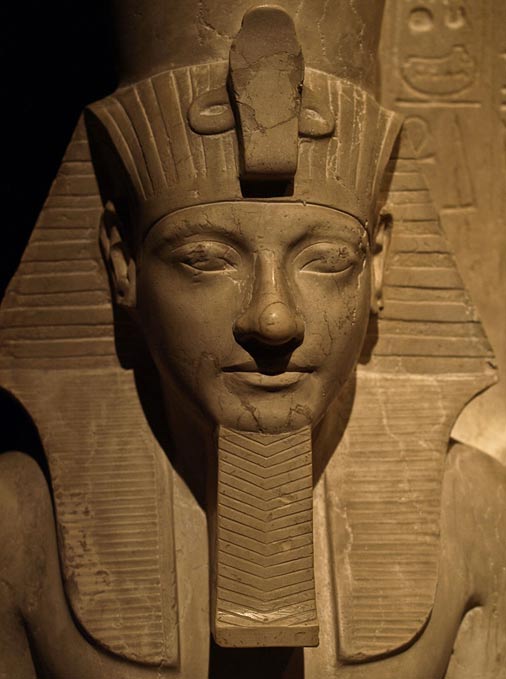
Detail of a statue of Horemheb (CC BY-SA 3.0)
The Generalissimo-turned-pharaoh used the dismantled blocks and masonry by their thousands as rubble/fill inside his new building projects ― Pylons II, IX, and X; plus pillars, foundations and the hypostyle hall at Luxor. In addition, the colossal statues of Akhenaten were knocked to the ground, where they were left in situ for millennia.
This move turned out to be Horemheb’s wholly unwitting contribution to Egyptology; for his efforts to erase the memory of Akhenaten's rule and the blot of the Amarna period ended with an ironic twist, because the talatat blocks that depicted scenes from the hitherto mentioned temples are more well-preserved now in comparison to scenes depicting Horemheb himself!
When Talatat Tumbled Out
As if by an act of god, by the 1840s, the ruins of the temple of Amun-Ra began to yield talatat―mostly those that tumbled out of colonnades and pillars. Up until then, Egyptologists had had no clue about Akhenaten whatsoever. These measly numbers of blocks multiplied sizably in the 1920s.
Serendipity played a major role in the process; for example, Chevrier stumbled upon thousands of decorated talatat when he initiated a project to restore the flooring of the hypostyle hall, and also insert a concrete core in Pylon II among the ruins at Karnak temple in 1926. It must be mentioned that prior to these discoveries no one paid much attention to talatat and Chevrier’s efforts to change this situation has to be lauded.
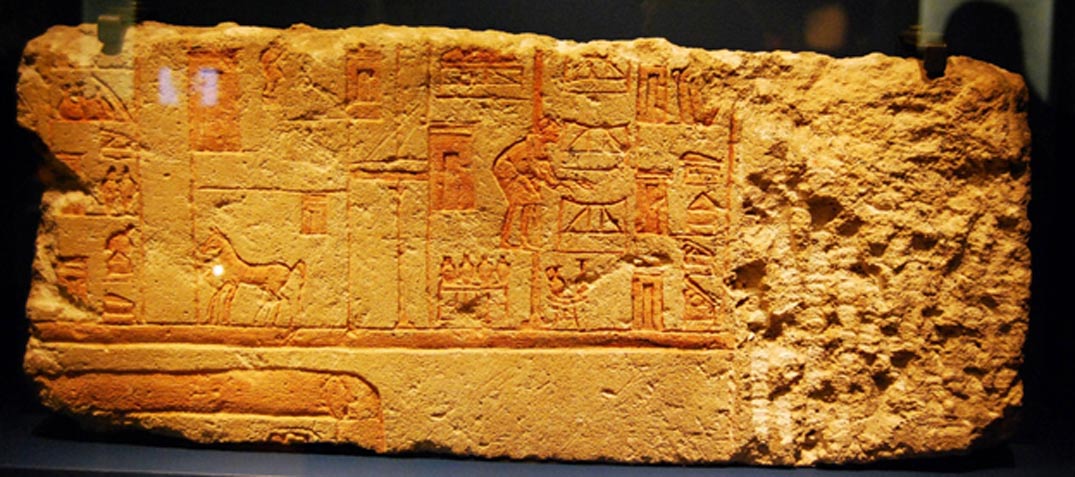
Detail from the Fragment of a relief, partly destroyed. Interior of a building, several rooms, with furniture and other details, also a horse. 18th Dynasty (1569-1315 BC), New Kingdom. (Photo: Heidi Kontkanen)
But this profusion of blocks and lack of proper storage facilities meant that thousands upon thousands of talatat were left out in the open where they weathered the elements. Moreover, given the incomprehensible jumble of blocks, up until 1965 detailed study could be conducted only on a miniscule number of talatat that caught the Egyptologist’s fancy. By that year, a staggering 100,000 limestone blocks were accounted for; and a phenomenal 40,000 of these were decorated on one or more sides with parts of relief scenes. The blocks were removed from Pylon IX between 1968 and 1969 by the Centre Franco-Egyptien during the restoration of Karnak.
Resurrecting Aten through Technology
Sadly, the details that Egyptologists managed to glean from this wealth of “stone records” was minimal. Not one could reveal anything more than the obvious―that they were used by Akhenaten in his buildings. What were these structures and their purpose; and when were they constructed? Even though answers weren’t forthcoming, in 1965 an idea to map these blocks and try and fit the pieces of this giant ancient jigsaw puzzle struck Ray Winfield Smith, an authority on ancient glass and Egyptology.
In an interview to National Geographic, he later expressed his motivation for undertaking the trailblazing ‘Akhenaten Temple Project’ thus, “I was dumbfounded. That such a mine of beauty and historical lore should lie neglected seemed unthinkable.”
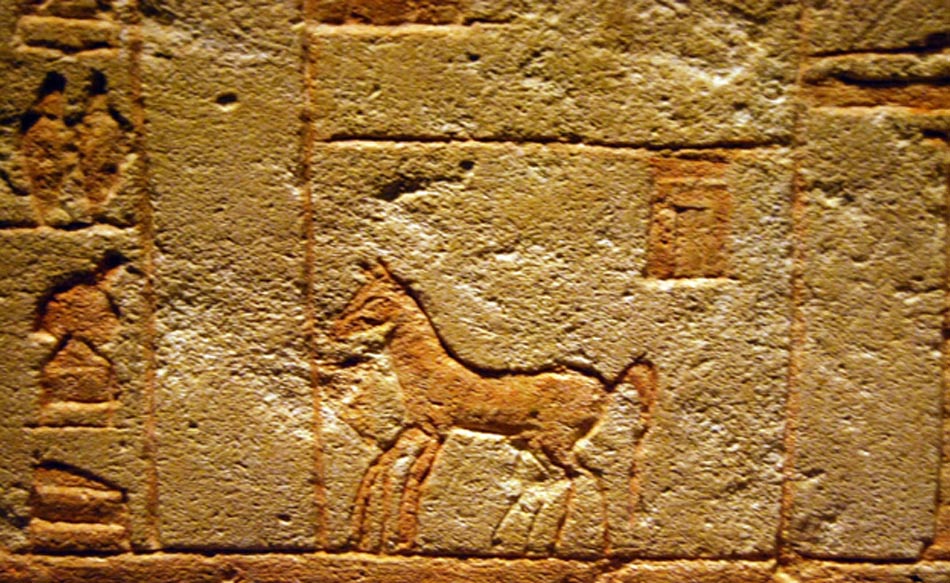
Detail from the Fragment of a relief showing a horse in a stable. 18th Dynasty (1569-1315 BC), New Kingdom. (Photo: Heidi Kontkanen)
Smith decided to photograph all the Karnak talatat he could locate; these included those in American and European collections too. Next, the arduous process of reconstructing countless relief scenes would be attempted by using an IBM computer. A year later, the retired American diplomat succeeded in gaining the sponsorship of the University Museum, and thereafter the Smithsonian Institution and the National Geographic Society. He formed a team that comprised Egyptologists from both Britain and Egypt. The challenge before the group was heightened by the fact that their work would be restricted to merely matching talatat in photographic reduction, without any reference to the actual site, ground plans or other remains in situ.
In an article for the Penn Museum in 1979, Donald Redford noted: “Smith was indefatigable in his pursuit of talatat. All the blocks at Karnak were photographed to scale, and then the intrepid investigator set out on a search which led him to France, Germany, Switzerland, and the U.S.A. Everywhere talatat were photographed, and Egyptologists willingly offered their own photos. Prof. W. Helck of Hamburg gladly lent his collection of photographs, the earlier collection of Prof. Legrain was secured, and M. Chevrier, now in retirement, offered by letter what his memory retained of the period when the blocks were being removed.”
Here is a brief description of a part of the Himalayan task that the researchers confronted: “First each of the 25,000 talatat was photographed on 35 mm film. Then the team “translated” the details and designs of each talatat onto a computer card. Together with the number assigned to the stone by the Project (which includes its warehouse location) the card notes its color, whether stretcher or header (the temple was built for the most part in alternating layers) and, most importantly, the incised design fragment thereon, under a score of different classifications.
A talatat may contain some hieroglyphic writing, the cartouche of Akhenaten or Nefertiti, or a part of a human or animal figure, a portion of a chair or chariot, a ceremonial fan, a religious symbol, a palanquin, an offering, part of a procession, etc. Hundreds of the stones—as would be expected given the official worship of Aten—show descending rays from a sun-disk above. On the cards, these are classified by the angles of the lines.”
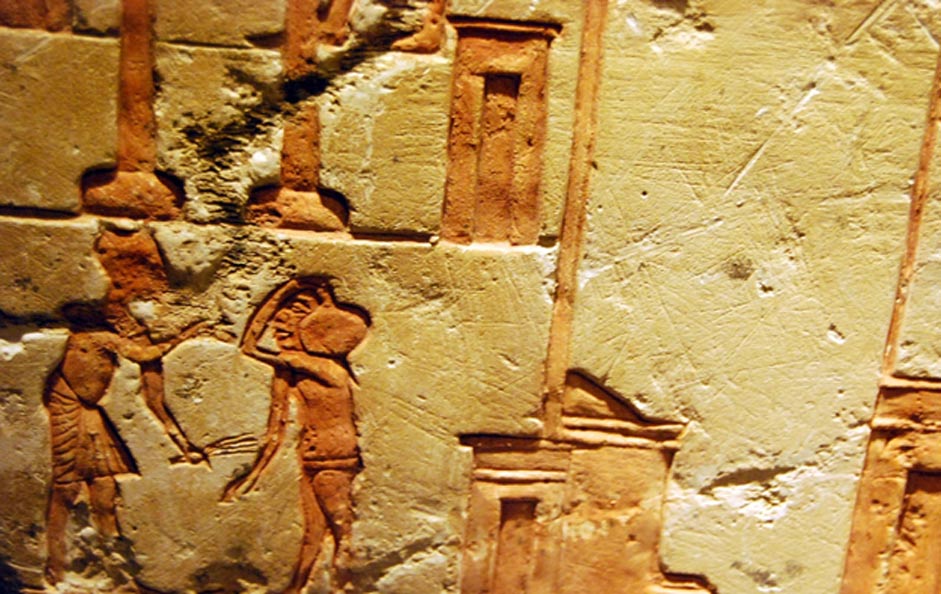
Detail from the Fragment of a relief showing men carrying vessels. 18th Dynasty (1569-1315 BC), New Kingdom. (Photo: Heidi Kontkanen)
With work progressing at a steady pace in Cairo, the team behind the ‘Akhenaten Temple Project’ was rewarded for their efforts with the great success it deserved. In five years’ time the Project had produced enough material for publication. “By dint of hard effort, and the services of two gifted artists, Mr. Leslie Greener and Mr. Joseph Clarke, the line drawings and the first half of the projected volume were completed in December 1971. The second half achieved MS form in September 1973, and the entire work, the first of a projected three volumes, was published in 1977,” Redford added.
Over several decades, numerous digs have yielded an array of information on Akhenaten’s ill-fated temples in Karnak. The studies conducted by Smith and his team, bold and fruitful as they were, enriched our understanding of the life and times of one of the most enigmatic pharaohs who ruled Egypt. By engaging in further investigations with the aid of the latest technology, the many mysteries that still lie hidden within the talatat horde may finally be cracked for the benefit of future generations of Egyptologists and enthusiasts.
[The author wishes to thank Heidi Kontkanen for granting permission to use the photographs shot in Egyptian Galleries, Medelhavsmuseet - Stockholm]
Featured image: Reconstructed Talatat from Gempaaten, recovered from the core of the ninth pylon of the Amun temple - Luxor Museum of Ancient Egyptian Art. (Jon Bodsworth/Public Domain)
References
Dr. Bob Brier, (Documentary) The Great Egyptians: Akhenaton: The rebel Pharaoh, 1998
Nigel Strudwick and Helen Strudwick, Thebes in Egypt: A Guide to the Tombs and Temples of Ancient Luxor, 1999
Richard H. Wilkinson, The Complete Temples of Ancient Egypt, 2000
Ian Shaw, The Oxford History of Ancient Egypt, 2004
Richard H. Wilkinson (Edited by) Egyptology Today, 2008